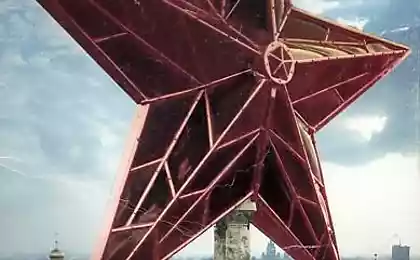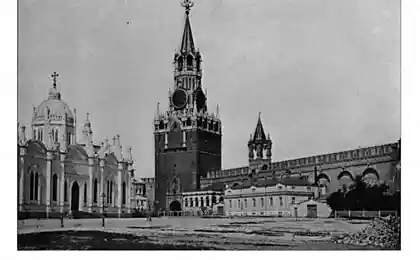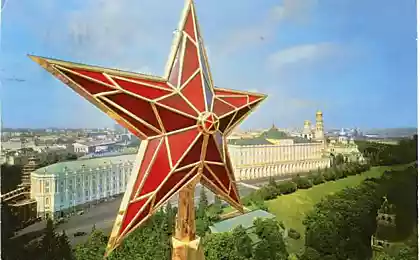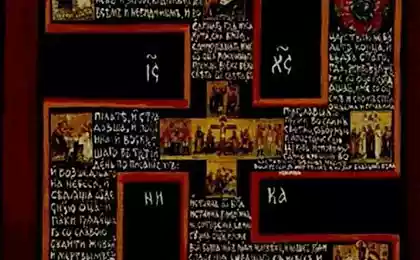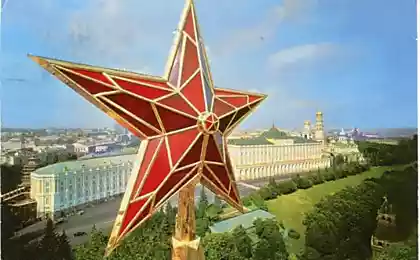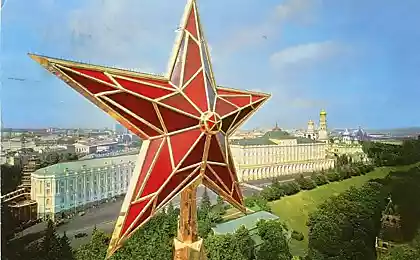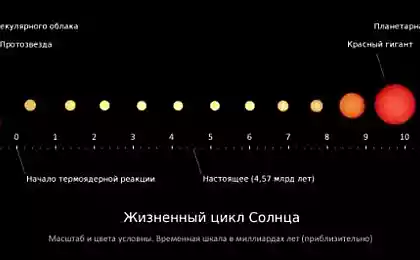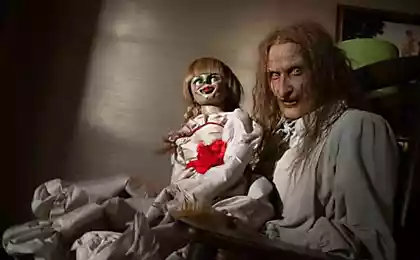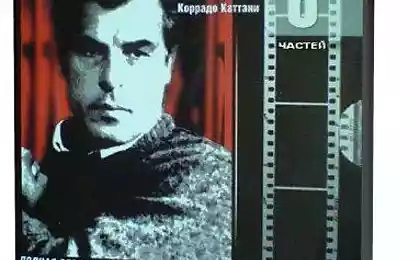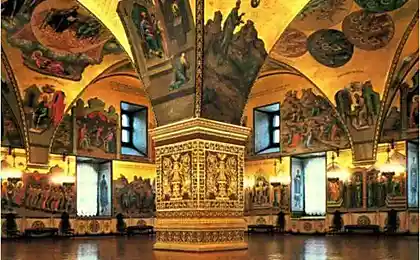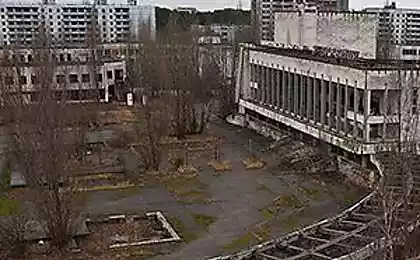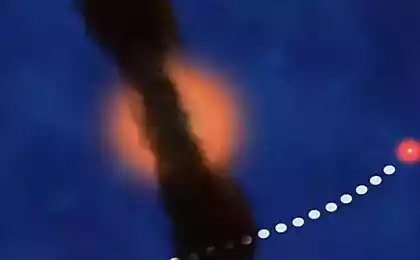1220
Facts about the Kremlin stars (10 photos)
October 24, 1935 was ordered to live long last character of the Russian monarchy - the double-headed eagles on the Kremlin towers. Instead, they were given five-pointed stars. 7 recall facts about the Kremlin stars.
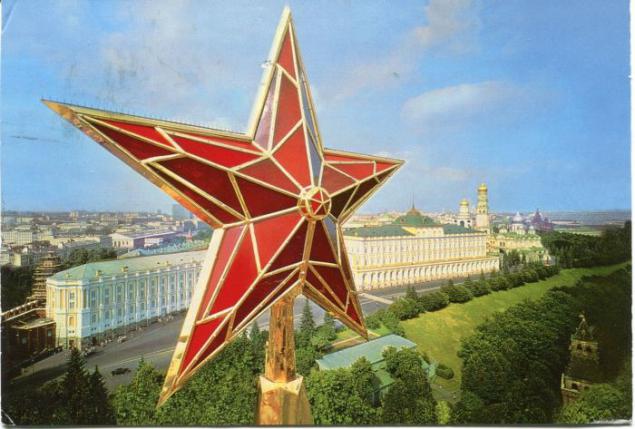
1. SYMBOLS
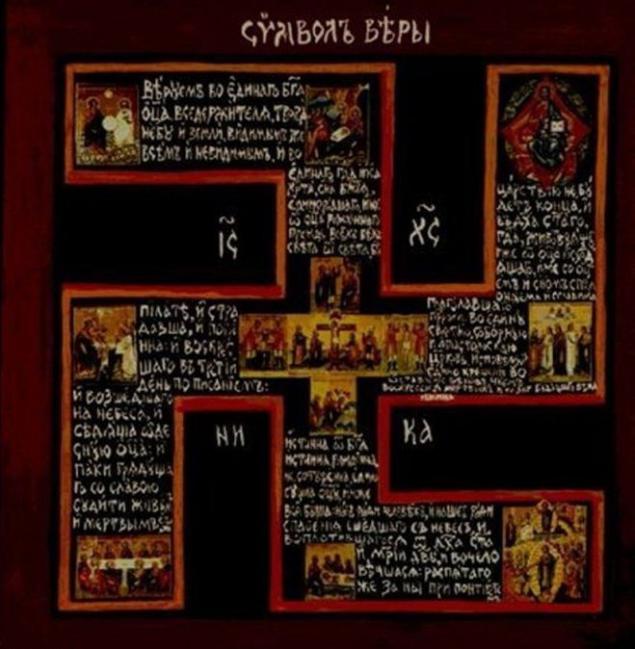
Why become a symbol of Soviet power is a five-pointed star is not known, but it is known that lobbied for this character Leon Trotsky. Seriously addicted esoteric, he knew that the star - pentagram, has a very powerful energy potential and is one of the strongest characters.
The symbol of the new state could easily become the swastika, whose cult was very strong in Russia in the early XX century. The swastika was depicted on "Kerensky notes", swastikas painted on the wall of the Ipatiev House Empress Alexandra Fyodorovna before being shot. But almost a unanimous decision with the filing of Trotsky, the Bolsheviks decided on a five-pointed star. The history of the XX century still show that the "star" stronger "swastika" ... The stars shone, and over the Kremlin, replacing the double-headed eagles.
2. TECHNOLOGY
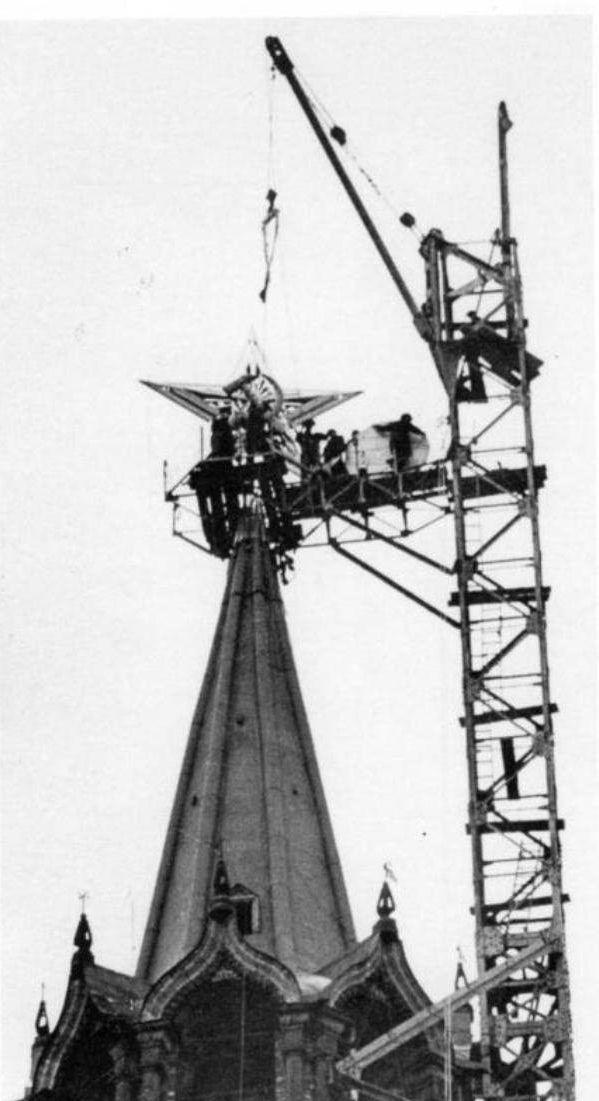
Tysyachekillogrammovye hoisted the stars on the Kremlin towers was not an easy task. The catch was that the best technology in 1935 was not simple. The height of the lowest towers Borovitskaya - 52 meters, the highest, the Trinity - 72. Tower crane such a height in the country was not, but for Russian engineers, there is no word "no", there is the word "necessary».
Experts Stalprommehanizatsii designed and built for each tower a special crane, which can be installed on its top tier. At the base of the tent through the turret window was mounted metal base - console. She collected a crane. For example, in several stages, first held dismantling double eagles, and then hoisting the Stars.
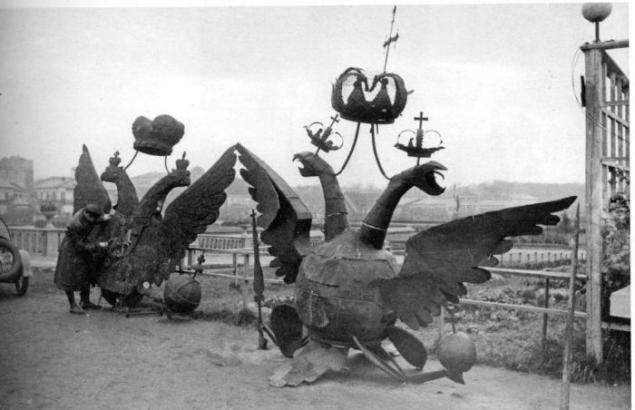
3. The reconstruction of tower
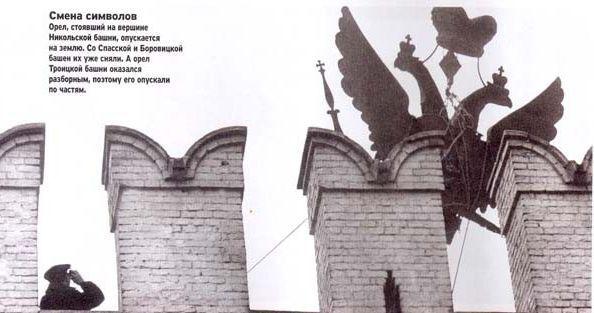
The weight of each of the stars of the Kremlin reached the ton. Taking into account the height at which they were to stay and sail surface of each star (6, 3 meters), there is a danger that the stars simply throw up with the tops of the towers. Towers it was decided to check for resistance. No wonder: the upper floors of towers and domes of the tents came to the dilapidated state. Builders reinforced masonry of the upper floors of the towers: in the tents of the Saviour, Trinity and Borovitskaya towers additionally introduced metallic bonds. Tent Nikolskaya tower was so dilapidated that it had to build anew.
4. so different and Werth
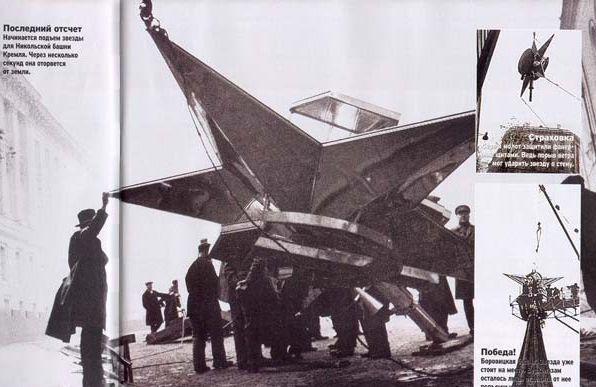
We do not have the same stars. Four stars differ from each other decoration.
On the faces of the stars of the Spasskaya tower were rays emanating from the center. In the rays of the star of the Trinity tower were made in the form of spikes. Star Borovitskaya towers represented two circuits inscribed into one another, and the rays of the star pattern Nikolskaya tower had.
Stars Spasskaya and Nikolskaya towers were similar in magnitude. The distance between the ends of beams was 4, 5 meters. Stars Trinity and Borovitskaya towers were smaller. The distance between the ends of beams was 4 and 3, 5 meters.
Stars - it's good, but the whirling stars - doubly good. Moscow is big, a lot of people, all need to see the Kremlin stars. At the base of each star we have established special bearings manufactured at the First Bearing Plant. Because of this, in spite of considerable weight, the star could easily spin, turning the "face" to the wind. According to the location of stars, so you can judge which way the wind blows.
5. Gorky Park
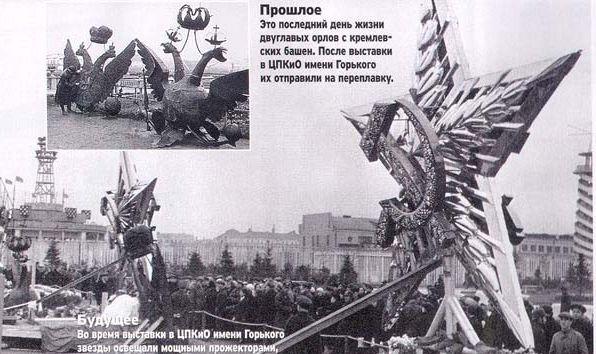
Install the Kremlin stars has become a real holiday for Moscow. The stars did not take in the night on Red Square. The day before the hoisting of the towers of the Kremlin stars are put on display in the park to them. Gorky. However, mere mortals to see the stars come secretaries of city and district of the CPSU (b), the spotlight shone Ural gems and sparkles rays stars. Eagles shot from the towers, installed here, demonstrating the dilapidated state of the "old" and the beauty of the "new" world.
6. RUBIN
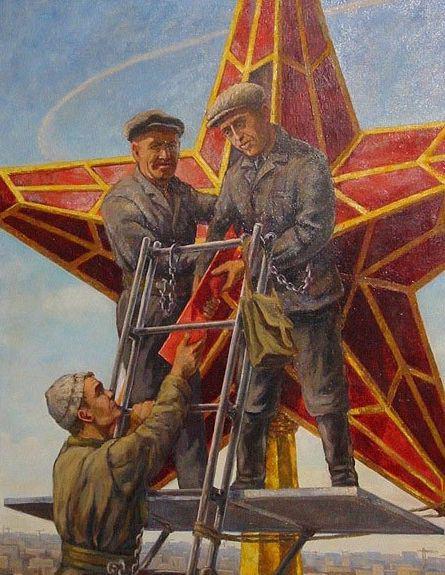
Kremlin stars were not always the ruby. The first stars, established in October 1935, were from high-alloy stainless steel and red copper. In the middle of each star, with both sides lined with glittering jewels emblem hammer and sickle. Gems year later faded, and the stars were too big and poorly fit into the architectural ensemble.
In May 1937 it was decided to establish the new stars - glowing, ruby. Then the four towers with stars added another one - Vodovzvodnaya.
Ruby glass was welded to the glass factory in Konstantinovka, prescription Moscow steklovara N. Kurochkin. We had to cook 500 square meters of ruby glass, which was invented a new technology - "Selenium Ruby". Before that, to achieve the desired color in the glass added to gold; Selenium - a cheaper and more deeper color. At the base of each star we have established special bearings, so that they, in spite of the severity could be rotated like a weathercock. They are not afraid of rust hurricane as "rim" star is made of special stainless steel. The principal difference: weathervanes indicate where the wind blows, and the Kremlin stars - where. We understand the nature and significance of the fact? Due to the diamond-shaped cross-section of the star she always gets hard forehead against the wind. And any - up to a hurricane. Even if all will carry around and cleaned, the star and the tents will remain tselehonkim. So I designed and built.
But suddenly revealed the following: in the sunlight ruby stars seem to be ... black. The answer was found - five-pointed beauties had to do double-layer and the bottom, the inner layer of glass should be milky white, well-scatter light. By the way, it provides a smooth and glowing, and hiding from the eyes of filament lamps. By the way, there is also a dilemma - how to make a smooth glow? After all, if the lamp is installed in the center of the star, the rays are likely to be less bright. Helped combination of different thickness and color saturation of the glass. Furthermore, lamps enclosed in glass consisting of prismatic refractors tiles.
7. LAMP
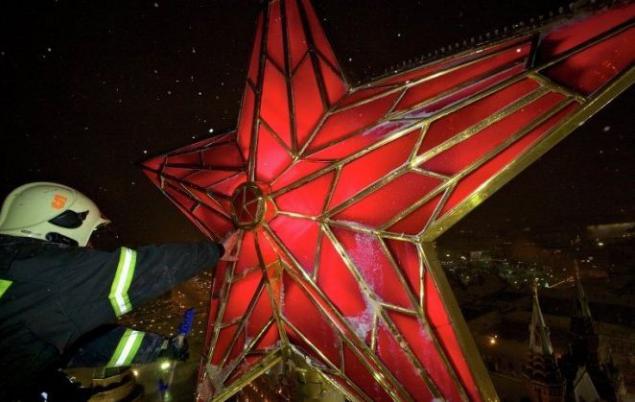
Kremlin stars are not only turning, but also shine. To avoid overheating and damage through the stars passed about 600 cubic meters of air per hour. Stars do not threaten power outages, because their energy is produced autonomously. Lamps for the Kremlin stars worked at the Moscow Electrical Lamp Plant. Power of three - on the Spasskaya, Nikolskaya and Troitskaya Tower - 5000 watts and 3700 watts - on Borovitskaya and Vodovzvodnaya. In each installed two filament connected in parallel. If the fuse continues to burn a lamp, and the control panel receives a fault signal. To change the bulbs to a star does not have to rise, the lamp goes down on a special rod right through the bearing. On the whole procedure requires 30-35 minutes.

In the history of the stars went out only 2 times. The first time, during the Second World War. It was then that the first stars were extinguished - they were not only a symbol but also an excellent beacon-guide. Closed sacking, they waited patiently for the bombing, and when it was over, it turned out that the glass in many places damaged and requires replacement. And pests inadvertently turned his well - gunners to defend the capital from the Nazi air raids. The second time when Nikita Mikhalkov in 1997 shot his "The Barber of Siberia».
The center console control and management of ventilation stars is located in Trinity Tower of the Kremlin. There are the most modern equipment. Every day, twice a day, visually check the lamp operation, as well as to switch their fans blowing.
Every five years, the stars of glass wash industrial climbers.

1. SYMBOLS

Why become a symbol of Soviet power is a five-pointed star is not known, but it is known that lobbied for this character Leon Trotsky. Seriously addicted esoteric, he knew that the star - pentagram, has a very powerful energy potential and is one of the strongest characters.
The symbol of the new state could easily become the swastika, whose cult was very strong in Russia in the early XX century. The swastika was depicted on "Kerensky notes", swastikas painted on the wall of the Ipatiev House Empress Alexandra Fyodorovna before being shot. But almost a unanimous decision with the filing of Trotsky, the Bolsheviks decided on a five-pointed star. The history of the XX century still show that the "star" stronger "swastika" ... The stars shone, and over the Kremlin, replacing the double-headed eagles.
2. TECHNOLOGY

Tysyachekillogrammovye hoisted the stars on the Kremlin towers was not an easy task. The catch was that the best technology in 1935 was not simple. The height of the lowest towers Borovitskaya - 52 meters, the highest, the Trinity - 72. Tower crane such a height in the country was not, but for Russian engineers, there is no word "no", there is the word "necessary».
Experts Stalprommehanizatsii designed and built for each tower a special crane, which can be installed on its top tier. At the base of the tent through the turret window was mounted metal base - console. She collected a crane. For example, in several stages, first held dismantling double eagles, and then hoisting the Stars.

3. The reconstruction of tower

The weight of each of the stars of the Kremlin reached the ton. Taking into account the height at which they were to stay and sail surface of each star (6, 3 meters), there is a danger that the stars simply throw up with the tops of the towers. Towers it was decided to check for resistance. No wonder: the upper floors of towers and domes of the tents came to the dilapidated state. Builders reinforced masonry of the upper floors of the towers: in the tents of the Saviour, Trinity and Borovitskaya towers additionally introduced metallic bonds. Tent Nikolskaya tower was so dilapidated that it had to build anew.
4. so different and Werth

We do not have the same stars. Four stars differ from each other decoration.
On the faces of the stars of the Spasskaya tower were rays emanating from the center. In the rays of the star of the Trinity tower were made in the form of spikes. Star Borovitskaya towers represented two circuits inscribed into one another, and the rays of the star pattern Nikolskaya tower had.
Stars Spasskaya and Nikolskaya towers were similar in magnitude. The distance between the ends of beams was 4, 5 meters. Stars Trinity and Borovitskaya towers were smaller. The distance between the ends of beams was 4 and 3, 5 meters.
Stars - it's good, but the whirling stars - doubly good. Moscow is big, a lot of people, all need to see the Kremlin stars. At the base of each star we have established special bearings manufactured at the First Bearing Plant. Because of this, in spite of considerable weight, the star could easily spin, turning the "face" to the wind. According to the location of stars, so you can judge which way the wind blows.
5. Gorky Park

Install the Kremlin stars has become a real holiday for Moscow. The stars did not take in the night on Red Square. The day before the hoisting of the towers of the Kremlin stars are put on display in the park to them. Gorky. However, mere mortals to see the stars come secretaries of city and district of the CPSU (b), the spotlight shone Ural gems and sparkles rays stars. Eagles shot from the towers, installed here, demonstrating the dilapidated state of the "old" and the beauty of the "new" world.
6. RUBIN

Kremlin stars were not always the ruby. The first stars, established in October 1935, were from high-alloy stainless steel and red copper. In the middle of each star, with both sides lined with glittering jewels emblem hammer and sickle. Gems year later faded, and the stars were too big and poorly fit into the architectural ensemble.
In May 1937 it was decided to establish the new stars - glowing, ruby. Then the four towers with stars added another one - Vodovzvodnaya.
Ruby glass was welded to the glass factory in Konstantinovka, prescription Moscow steklovara N. Kurochkin. We had to cook 500 square meters of ruby glass, which was invented a new technology - "Selenium Ruby". Before that, to achieve the desired color in the glass added to gold; Selenium - a cheaper and more deeper color. At the base of each star we have established special bearings, so that they, in spite of the severity could be rotated like a weathercock. They are not afraid of rust hurricane as "rim" star is made of special stainless steel. The principal difference: weathervanes indicate where the wind blows, and the Kremlin stars - where. We understand the nature and significance of the fact? Due to the diamond-shaped cross-section of the star she always gets hard forehead against the wind. And any - up to a hurricane. Even if all will carry around and cleaned, the star and the tents will remain tselehonkim. So I designed and built.
But suddenly revealed the following: in the sunlight ruby stars seem to be ... black. The answer was found - five-pointed beauties had to do double-layer and the bottom, the inner layer of glass should be milky white, well-scatter light. By the way, it provides a smooth and glowing, and hiding from the eyes of filament lamps. By the way, there is also a dilemma - how to make a smooth glow? After all, if the lamp is installed in the center of the star, the rays are likely to be less bright. Helped combination of different thickness and color saturation of the glass. Furthermore, lamps enclosed in glass consisting of prismatic refractors tiles.
7. LAMP

Kremlin stars are not only turning, but also shine. To avoid overheating and damage through the stars passed about 600 cubic meters of air per hour. Stars do not threaten power outages, because their energy is produced autonomously. Lamps for the Kremlin stars worked at the Moscow Electrical Lamp Plant. Power of three - on the Spasskaya, Nikolskaya and Troitskaya Tower - 5000 watts and 3700 watts - on Borovitskaya and Vodovzvodnaya. In each installed two filament connected in parallel. If the fuse continues to burn a lamp, and the control panel receives a fault signal. To change the bulbs to a star does not have to rise, the lamp goes down on a special rod right through the bearing. On the whole procedure requires 30-35 minutes.

In the history of the stars went out only 2 times. The first time, during the Second World War. It was then that the first stars were extinguished - they were not only a symbol but also an excellent beacon-guide. Closed sacking, they waited patiently for the bombing, and when it was over, it turned out that the glass in many places damaged and requires replacement. And pests inadvertently turned his well - gunners to defend the capital from the Nazi air raids. The second time when Nikita Mikhalkov in 1997 shot his "The Barber of Siberia».
The center console control and management of ventilation stars is located in Trinity Tower of the Kremlin. There are the most modern equipment. Every day, twice a day, visually check the lamp operation, as well as to switch their fans blowing.
Every five years, the stars of glass wash industrial climbers.
